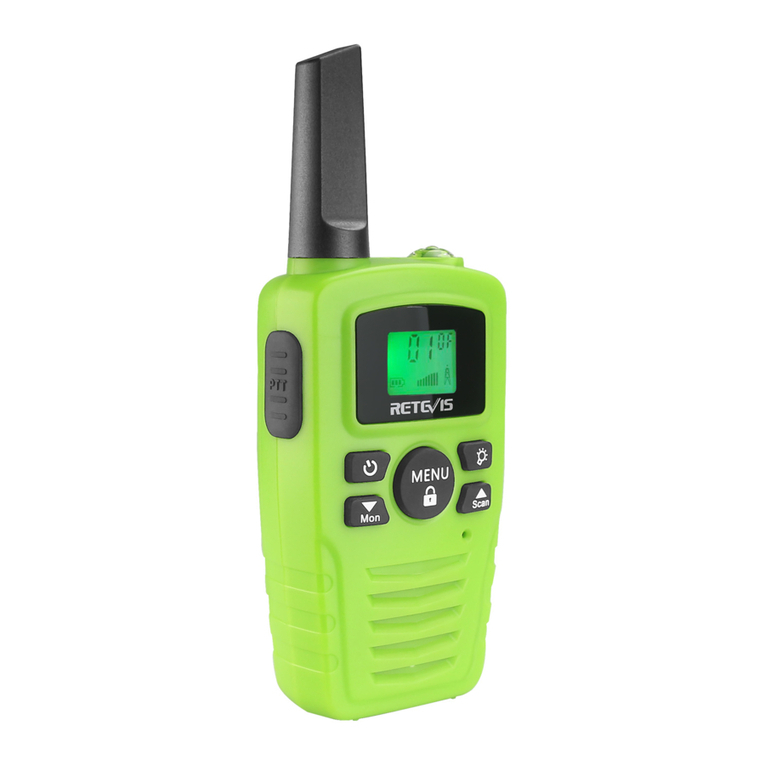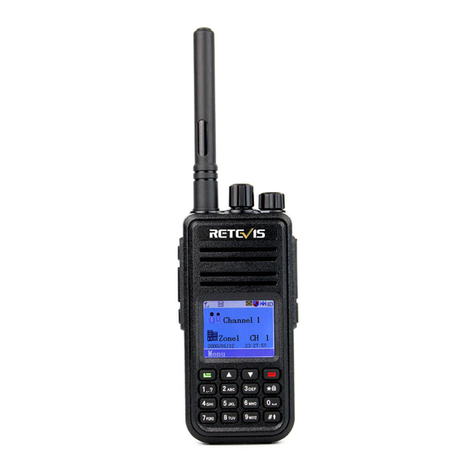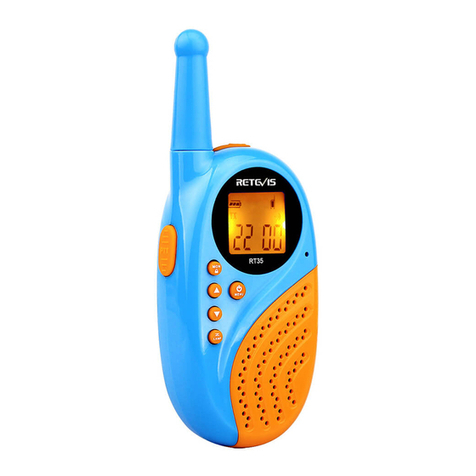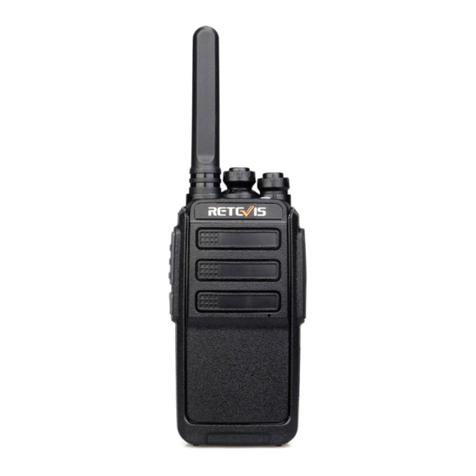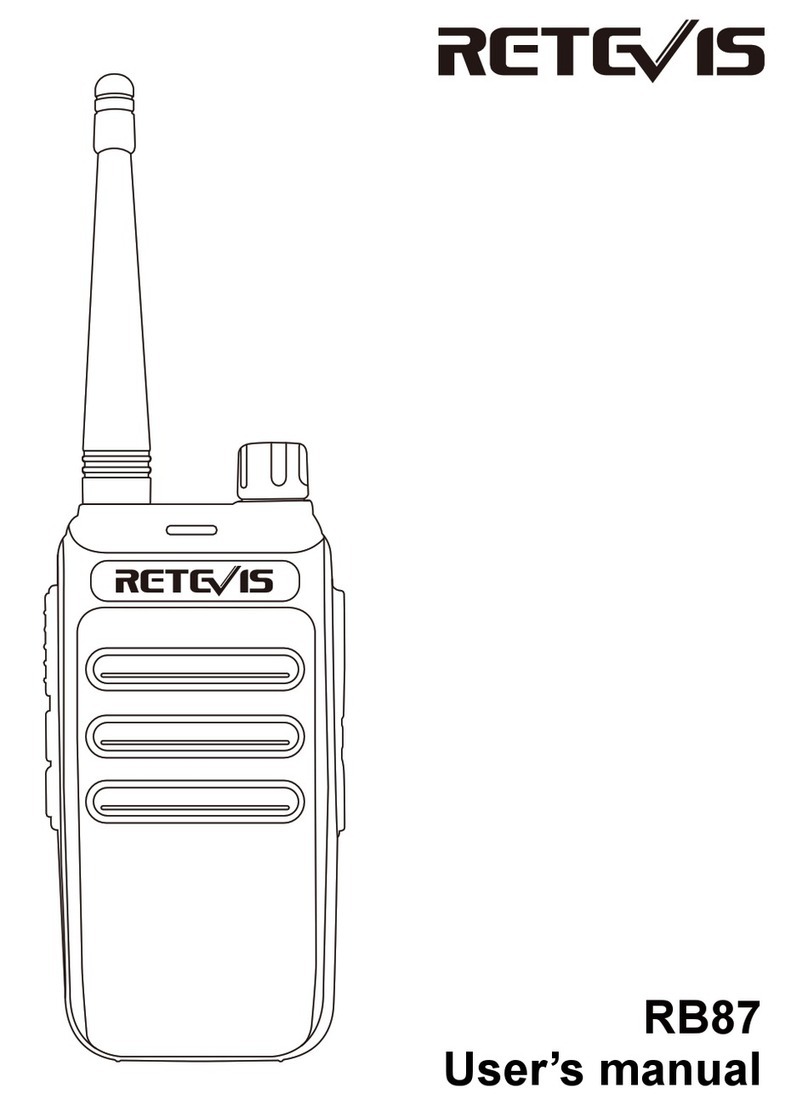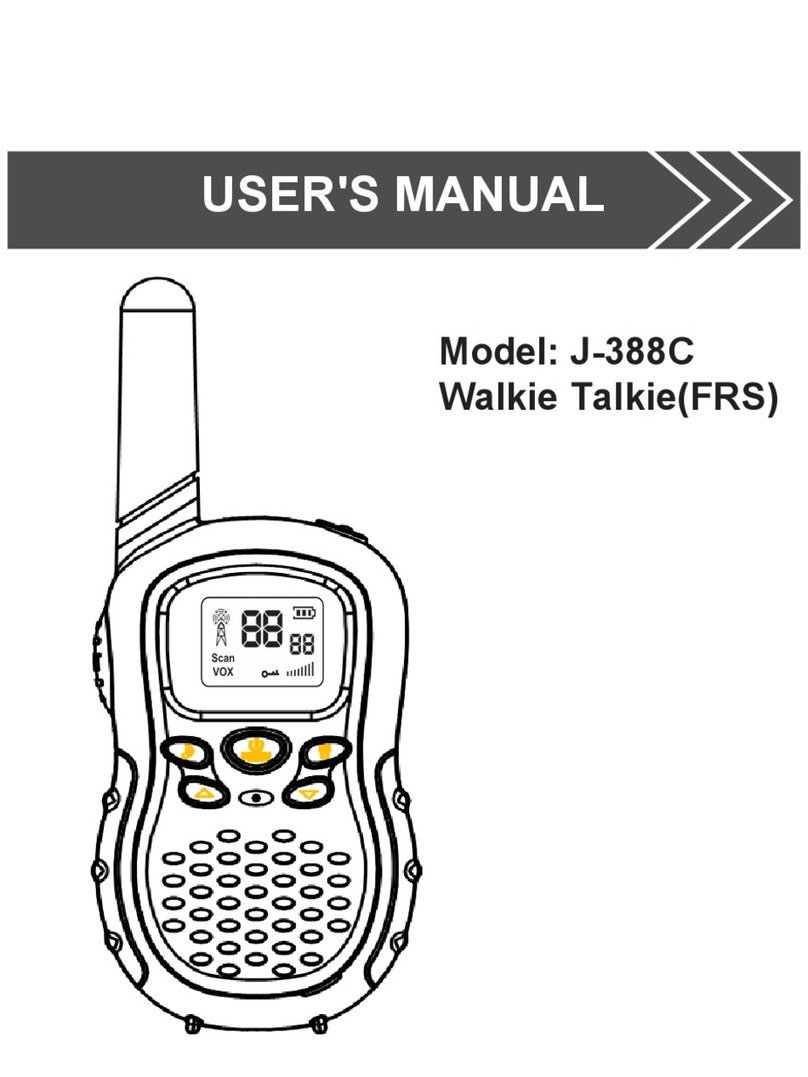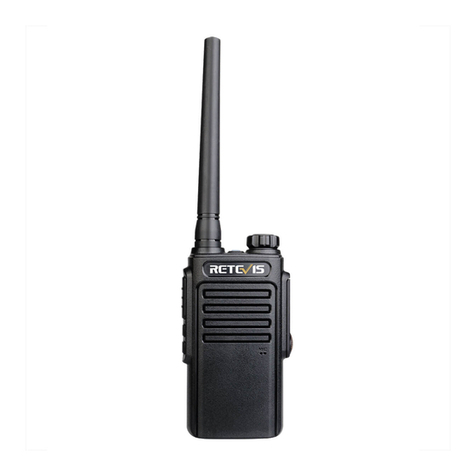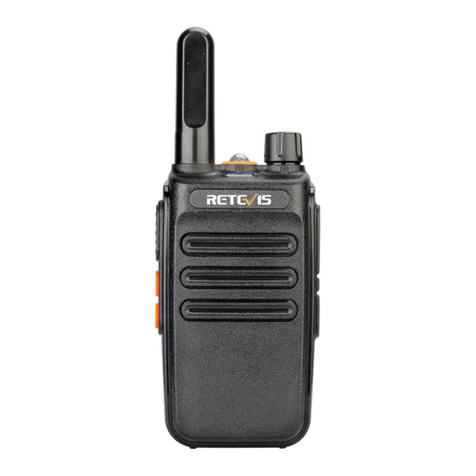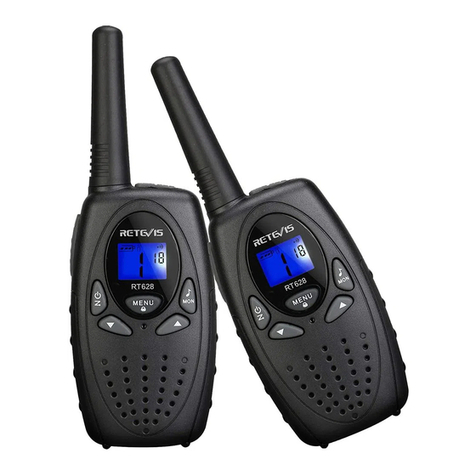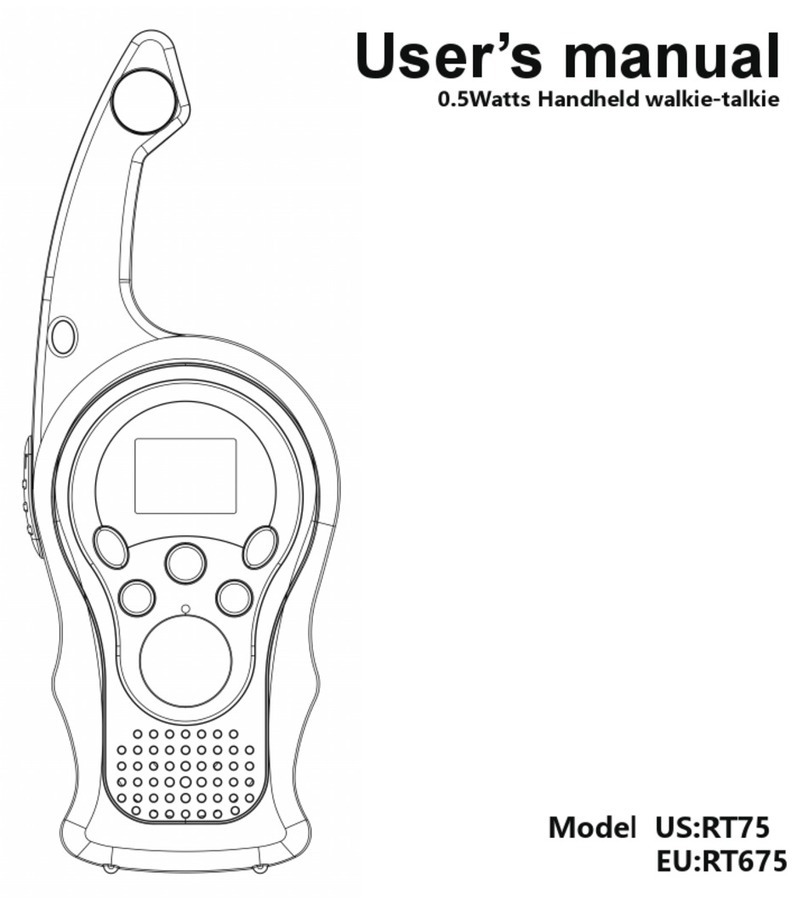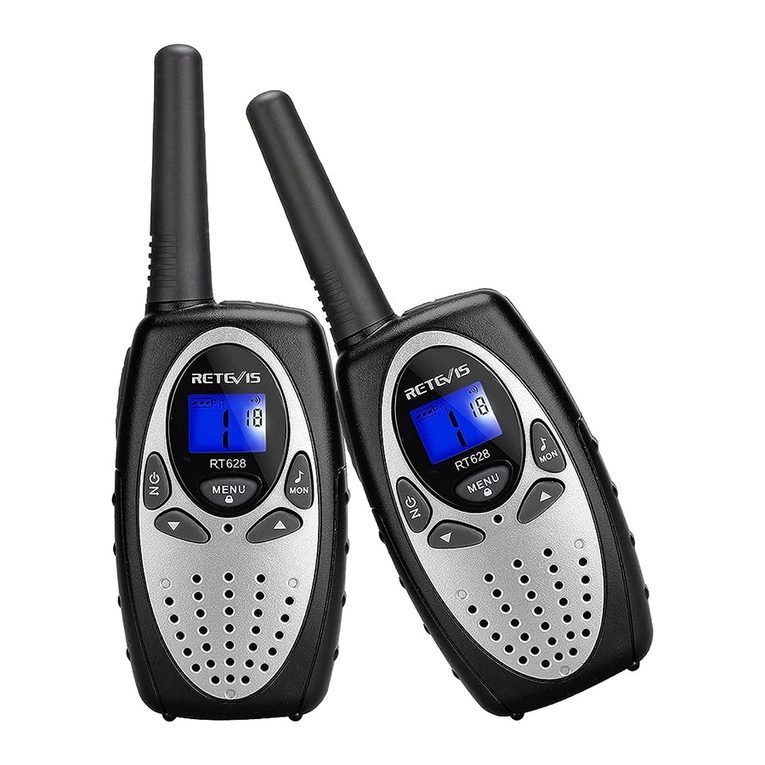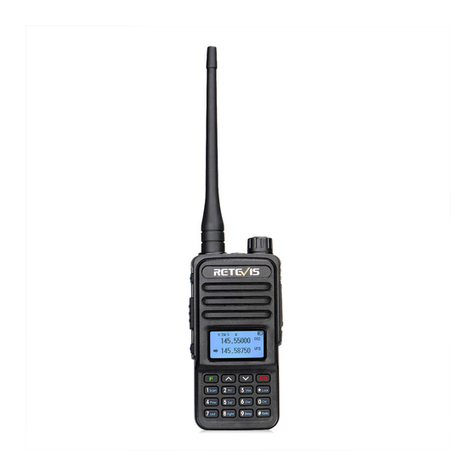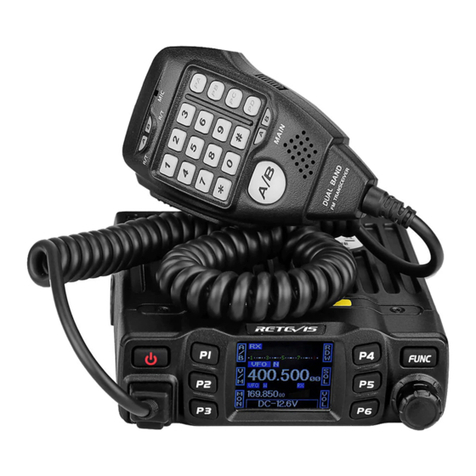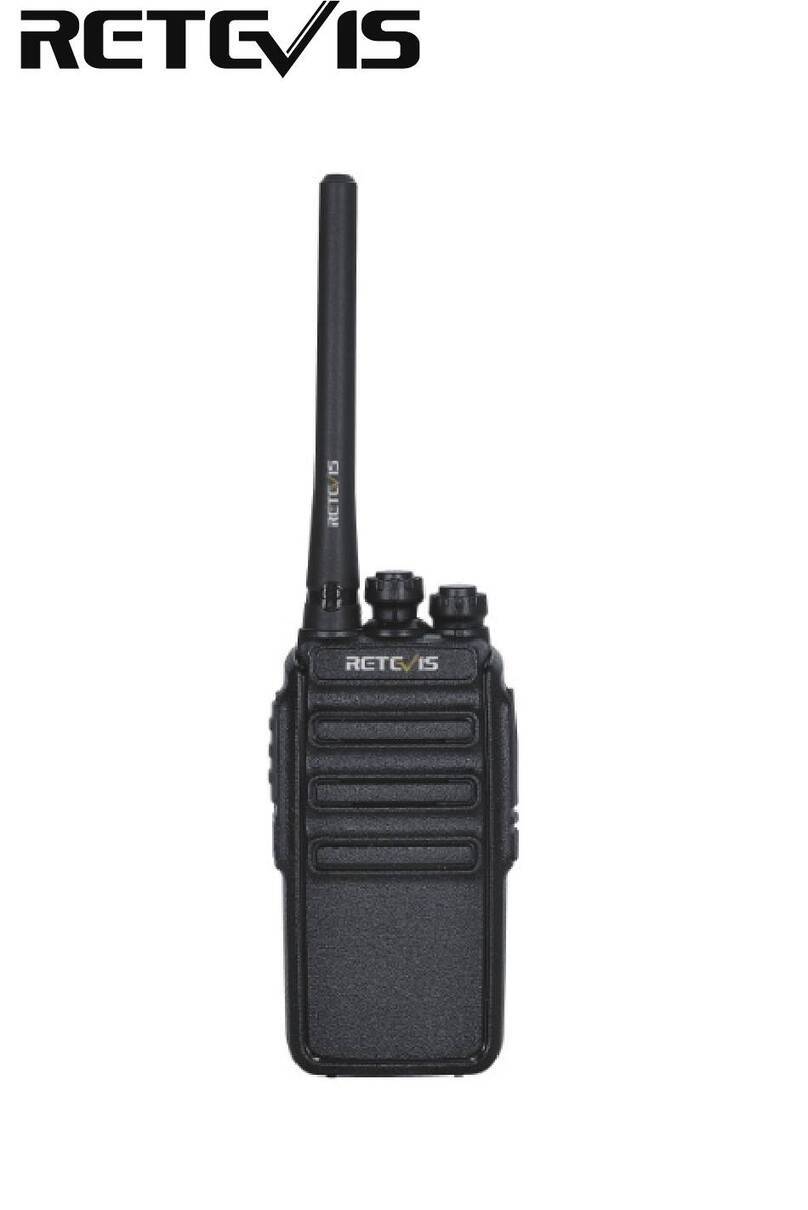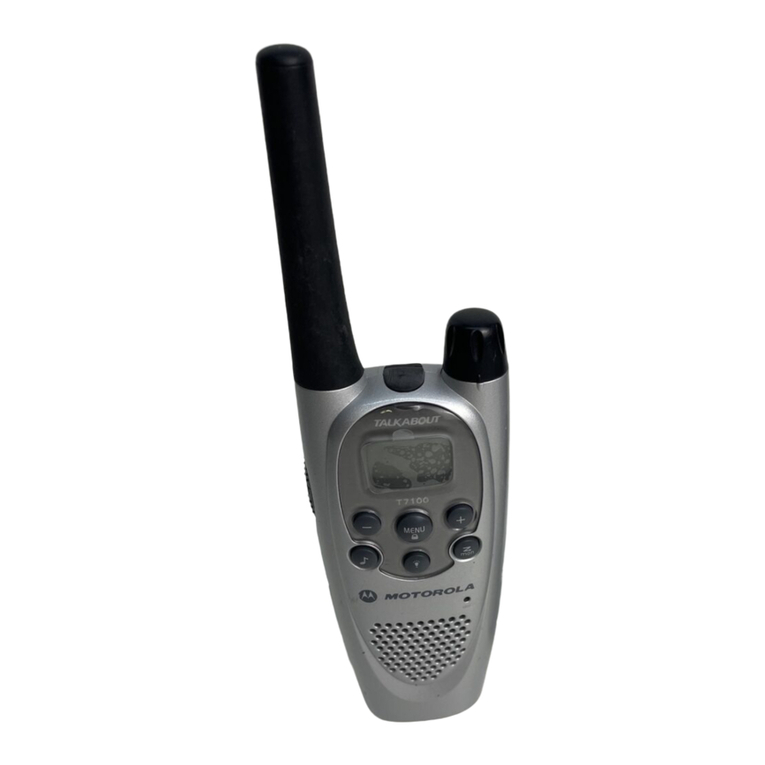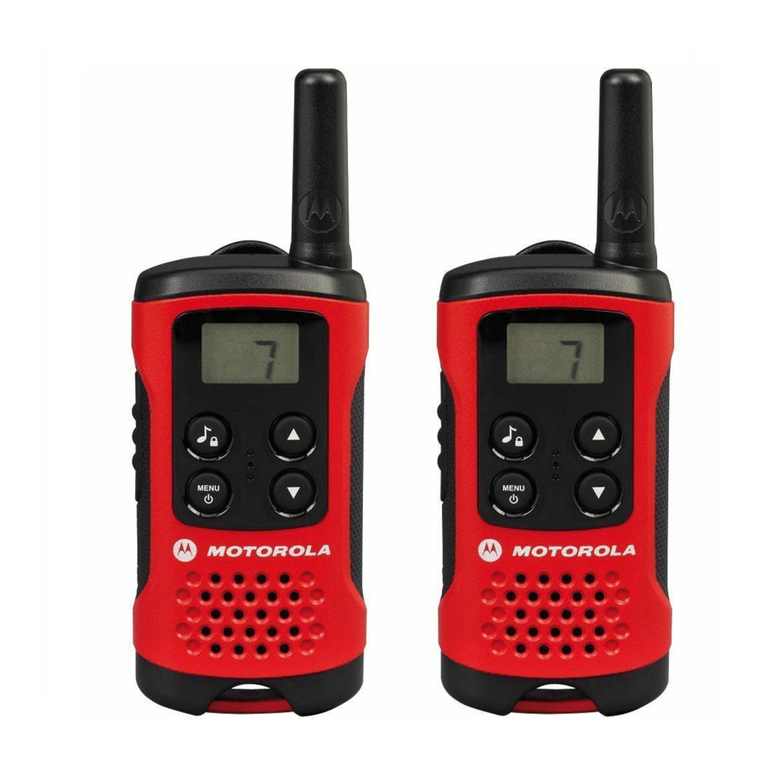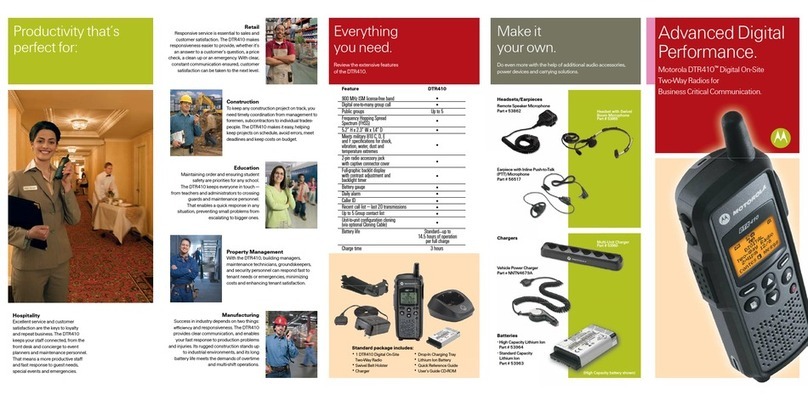
RF ENERGY EXPOSURE AND PRODUCT SAFETY GUIDE FOR
PORTABLE TWO-WAY RADIOS
This two-way radio uses electromagnetic energy in the radio frequency
(RF) spectrum to provide communications between two or more users
over a distance. RF energy, which when used improperly, can cause
biological damage.
All Retevis two-way radios are designed, manufactured, and tested to
ensure they meet government-established RF exposure levels. In ad-
dition, manufacturers also recommend specific operating instructions
to users of two-way radios. These instructions are important because
they inform users about RF energy exposure and provide simple
procedures on how to control it.
Please refer to the following websites for more information on what
RF energy exposure is and how to control your exposure to assure
compliance with established RF exposure limits:
http://www.who.int/en/
Local Government Regulations
When two-way radios are used as a consequence of employment, the
Local Government Regulations requires users to be fully aware of and
able to control their exposure to meet occupational requirements.
Exposure awareness can be facilitated by the use of a product label
directing users to specific user awareness information. Your Retevis
two-way radio has a RF Exposure Product Label. Also, your Retevis
user manual, or separate safety booklet includes information and
Warnings
07
Before using this radio, read this guide which
contains important operating instructions for safe
usage and RF energy awareness and control for
compliance with applicable standards and
regulations.
